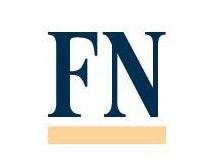
Active ETFs are not what they seem
What is an active ETF and what advantages does it bring to product manufacturers and, more importantly, investors?
Is the move into active ETFs – which have been called a disruptive innovation – a defensive play by mutual funds to thwart the perceived threat of ETFs by trying to imitate ETFs? Or is the ETF industry trying to absorb traditional mutual funds?
To begin to answer these questions, we must first consider what “active” means. Active funds refer to a portfolio management strategy where the manager makes specific investments with the goal of outperforming a specific benchmark and hence delivering alpha. Active ETFs are not ETFs that are designed to track non-market cap indices as some commentators have suggested.
Index-tracking ETFs are valued for their transparency, flexibility, low cost and liquidity, among other aspects.
Like many imitations of successful products however, the end result may not have all the benefits and features of the original, so the very principles that underpin the first and traditional ETF may be lacking in this new model.
Most ETFs in Europe are Ucits funds and although they account for only 3.5% of all Ucits funds, they have been growing at a rate of 47% a year over the past decade compared with 5% per annum for other types of Ucits funds.
Historic data shows how difficult it is to find traditional active funds that consistently deliver alpha and there is no guarantee that active ETFs will do so.
The Securities and Exchange Commission, the US regulator, requires ETFs to provide transparency of their holdings and defines active ETFs as funds that do not track an index. Successful active equity managers are less willing to provide transparency on their “secret sauce”. Some less well-known active equity managers have been willing to run active ETFs with full transparency. These products have had limited success in raising assets and some have been closed.
Well-known fixed-income managers are more likely to offer transparent active ETFs as the benchmarks are much larger and bond investment strategies are harder to copy. Two relatively new and successful active ETFs in the US by Pimco, Total Return ETF and Enhanced Short Maturity ETF, have each gathered about $1.7bn in assets under management. Active ETFs are still a very small part of the ETF industry globally and, at the end of the second quarter, accounting for $6.6bn in 75 ETFs or just 0.4% of total global ETF assets under management.
Managers in the US are trying to gain permission from the SEC to allow them to manage non-transparent active ETFs. Proxy portfolios are designed to mimic the performance of the real holdings while disguising the ETF’s actual holdings and transparency on a quarterly basis without in-kind creation/redemption.
Navigate Fund Solutions, a subsidiary of US-based investment firm Eaton Vance, is working on developing exchange-traded managed funds, which will be active non-transparent funds that trade based on a reference to future net asset value.
These proposals for non-transparent active ETFs are similar to how exchange listed and traded active open-ended funds have worked in Europe for over 25 years before the launch of the first ETF in US in 1993.
Euronext offers nearly 200 funds in a segment that operates NAV +/- pricing. Deutsche Börse has over 2,800 funds tradable via continuous auction with specialists on the Xetra platform. In Denmark more than 420 mostly active Ucits funds are traded on the exchange.
They are not identified as ETFs, nor do they want to be as they do not have the typical ETF characteristics.
• Nature of index-tracking ETFs; what active ETFs may not have
Transparency
The full list of holdings is normally published daily
Flexibility
Trade and settle like stocks, intraday pricing and trading, place stop and limit orders, increments of one share and go long or short
Cost effective
Asset weighted average TER for ETFs is 0.31%
Diversification
Exposure to an entire benchmark
Indicative NAV
Real-time value of the underlying portfolio
Liquidity
There are two liquidity sources: secondary, volume on exchange; and primary, in-kind creation or redemption process trading the underlying holdings by authorised participants
